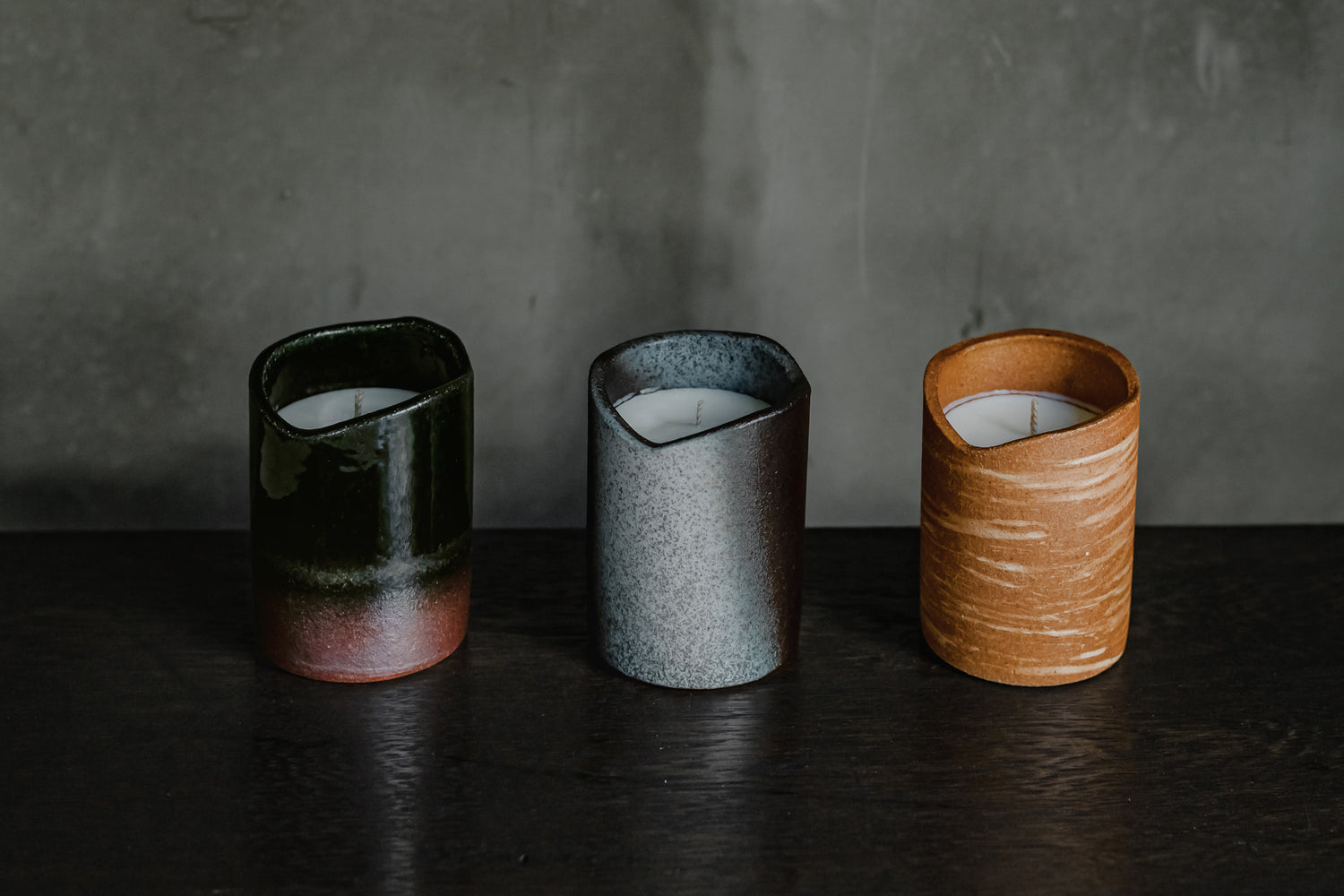Seto ware originated in the 12th century, in the early Kamakura period. Potteries are scattered around Nagoya City, Aichi Prefecture. Its roots lie in a type of pottery called ash-glazed pottery from the Heian period, and at the time, the area was known as a production area called Sanageyo. Sanageyo was originally a major producer of sueki ware. Sueki ware is the root of Japanese ceramics, including Seto ware.
Before Sueki, earthenware was the mainstream for a long time.
The history of Japanese pottery began with Jomon pottery, about 12,000 to 16,000 years ago. For over 10,000 years, there was a period when pottery was the only product. Jomon and Yayoi pottery were fired over bonfires, similar to open-air burning, at low temperatures of around 700 to 900 degrees, so they were not fully hardened and were prone to breaking.
Through time, sueki ware was introduced to Japan in the early 5th century. Sueki ware is fired at a high temperature of 1200 degrees, giving it a sturdy finish, and these characteristics are related to Seto ware.
Sue ware was produced using techniques brought over by immigrants from the Korean Peninsula.
Among their techniques, kiln construction influenced the quality of their pottery. The anagama kiln, which had a roof created by digging a trench into the mountain slope, allowed them to control the high temperature firing.
Sue ware was also fired using a method called reducing flame. It was fired in an oxygen-deficient environment, and the oxygen in the clay and glaze was taken by the air in the kiln, causing the color of the pottery to change to a bluish or blackish gray. This allowed us to enjoy the unique scenery of the pottery.
In addition, natural glaze was created when ashes from the firewood fuel fell on the pottery and melted during firing. In order for the ashes to melt, the temperature inside the kiln had to rise to a high temperature of around 1200 degrees. This natural glaze became the origin of Seto ware as glazed pottery.
At the Sanage Kiln (Aichi Prefecture) in the Heian period, ash-glazed pottery was produced based on the techniques of sueki ware. The position of the pottery in the kiln was adjusted so that the natural glaze created by melting the ash from the firewood fuel would be applied beautifully to the pottery.
Ash-glazed pottery fired at high temperatures is robust, beautiful and practical, and in this respect it can be said to be the roots of not only Seto ware but also modern ceramics.
This ash-glazed pottery fell into decline in the Middle Ages, but was revived in Seto, which marked the beginning of Seto ware in the early Kamakura period (late 12th century).
Like Seto ware, the historic kilns that continue from the Middle Ages to the present day are collectively called the Six Ancient Kilns of Japan, but at the time, Seto was the only one that produced pottery using glazes.
Seto developed following the example of Chinese ceramics (celadon and white porcelain), but its fertile soil, which allows for the collection of high-quality clay and silica sand, the raw material for glass, has also contributed greatly to the development of Seto ware.
Ceramics originated from the adoption of techniques from immigrants. In modern times, fine ceramics have been introduced that can artificially enhance the properties of pottery, and while they have flexibly adopted such new technologies and cultures, they have continued to develop in a way that suits the local climate, which is probably why they are one of Japan's leading potteries.

Wind-Crazy Vase / Iwao
A Seto-yaki vase with iron glaze coloring


